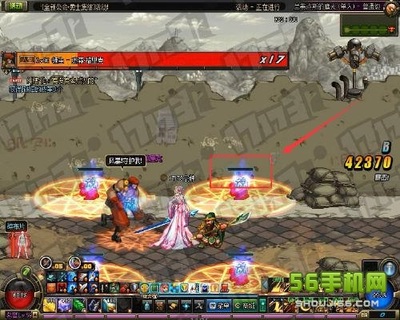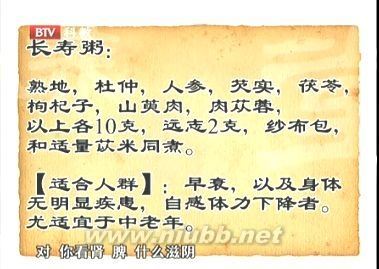更新了两篇更新的,2016年
Aug 2016 / Vol. 18 / No. 2 / Pages 146-147Advances in UrologyVolume 2014 (2014), Article ID 863209, 7 pages
2015nature上发表的有关肖传国手术的综述文章。
43,44,45,46,47,65,都是引用肖传国发表的文献。
结论如下:
In 2010,Peters and colleagues
reported the results of a similar study in children withspina bifida ().Nine patients with NBD related to spina bifida underwent the Xiao procedure,with Xiao directly participating in the surgeries. By 1 year after surgery,seven patients (78%) had a reproducible increase in bladder pressure duringurodynamic testing with stimulation of the dermatome related to the nerve rootused for coaptation. No patient was completely continent of urine, but themajority reported improved bowel function. As a result of the operation, onepatient had a persistent foot drop at 1 year after surgery. Because these1-year results were not as encouraging as those reported by Xiao 本人et al.,, , more studies and longer follow-up periods were recommendedby the authors.In summary, the Xiao procedure,in which efferent portions of a normal somatic reflex, such as the patellar orAchilles reflex arcs, are rerouted to motor nerves involved in autonomicbladder function was successful in some studies,
, , but disappointing in others, particularly when success was evaluated after >2 yearsafter surgery.
Duringthe untethering procedure, patients could be randomized to undergo either areinnervation nerve transfer, such as the Xiao procedure, or a shamreinnervation. The patients, the patients’ family members and the cliniciansperforming the follow-up urodynamic evaluations must be kept unaware whetherthe patient received the reinnervation or the sham surgery. Long-term follow-upevaluations of at least 2–3 years are required, so that initial positiveresults, which have been reported after up to 18 months following surgery,45,46, 66, 67 are not overinterpreted as indicators of permanent improvement.Ideally, these surgeries should be based on positive results in at least twodifferent animal species with similar long-term follow-up results.
本人英语不太好。试着翻译一下最后几句。限于本人英文水准,如有理解错误,请指正。
Long-termfollow-up evaluations of at least 2–3 years are required, so that initialpositive results,
2到3年的长期随访评估是必要的,初期有效的结果才
whichhave been reported after up to 18 months following surgery,45, 46, 66, 67 arenot
(报告中,手术后最长随访18个月,参考文献45, 46,66,67)
overinterpretedas indicators of permanent improvement. Ideally, these surgeries should be
不会被过分解读为永久的改善。理想条件下,这种手术应该
based onpositive results in at least two different animal species with similarlong-term follow-up results.
基于在两种不同的动物实验和相似的长时间随访结果。
简单说就是这个手术第一长期效果不确定,第二,即使是肖本人做的手术,近期效果也没他宣称的好。
我的 观点:肖传国用病人做实验,不告诉病人是实验,说可以治愈,还高额收费,欺骗病人。这种人可谓道德沦丧。所以雇凶打人并不出意外。清理出医生队伍没错。他恨方舟子,不是因为学术问题,而是因为断了肖传国的财路啊。这种拿病人的钱,身体做实验,还能大把赚钞票,如果成功就分分钟评院士,名利双收的好事,肖传国梦里都会笑醒吧。
Dr. Gerald Tuite and his colleagues at Johns Hopkins All Children's Hospital in St. Petersburg, Florida, have submitted an important study
6 demonstrating the lack of efficacy of the controversial Xiao procedure—a somatic-to-autonomic nerve transfer for improving bladder function—in children with myelomeningocele (MM) or lipomyelomeningocele (LMM). The study represents one of the few prospective randomized trials not only in pediatric neurosurgery, but also in neurosurgery in general. Beyond the surface reporting of an ineffectual surgical procedure, this study by Tuite et al.6sheds light on many other salient topics related to clinical research, including ethics, scientific misconduct, scientific integrity, and the virtues of a “negative” study, which are just as impactful as its more evident primary outcome. The authors should be commended for this important work.The Xiao procedure has received much attention from desperate parents of children with MM/LMM, pediatricians, urologists, and the lay press. Its fanfare extends beyond the field of neurosurgery. But was all this fanfare merited? The present well-executed study,
6 along with the authors' prior work,7contradicts widely cited studies4,5 that were reported to validate the efficacy and safety of the Xiao procedure. Perhaps a little more history about the inventor of the Xiao procedure is needed to put the current study in context and highlight why it is so significant. Interestingly, Dr. Chuan-Guo Xiao, a urologist and founder of the self-named Xiao procedure, is himself a polarizing figure.Dr. Xiao conceived the idea for an innovative surgical procedure to restore bladder function in patients with MM, LMM, or spinal cord injury while working in the US under a National Institutes of Health grant in the late 1980s. In 1995 Xiao returned to China to perform clinical studies designed to demonstrate the efficacy of his newly described Xiao procedure. He benefited from the regulatory environment that governs China's large health care market and human experimentation. Through his own publications,
8–13 Dr. Xiao claimed a 70%–90% rate of success in restoring bladder control. Yet these astonishing results have not been duplicated by any center outside of ChinaThirteen patients (nine females and four males) were enrolled. Median age was eight years old (range was six to 37 years) and the majority ( had overactive neurogenic bladders; two were underactive. All were ambulatory; eight required no assistive devices, one required ankle foot orthosis (AFO), and five had leg braces (two also used crutches). Eight patients had their spinal defect closed at birth, three had intrauterine closure, and two had no cutaneous defect and no closure. Six patients had undergone previous cord detethering surgery.

During the perioperative period, two patients had increased wound drainage that resolved with prone positioning, but two others with suspected cerebral spinal fluid (CSF) leak required another surgical procedure at 25 and 37 days postoperatively. Twelve patients had transient lower extremity weakness that resolved by 12 months, and one that had intrauterine closure of her defect developed permanent foot drop after surgery. Renal ultrasounds and serum creatinines remained stable in all patients throughout the study.
At three years, three patients (including the one with permanent foot drop) did not return for follow-up and were considered nonresponders based on a lack of positive response at their two-year visit. In the remaining 10 subjects, even though only four were able to void at all at baseline, eight of 10 were voiding at three years (Table). However, using our definition of treatment success, nerve rerouting was successful in only seven of 13 (54%), since one other was only voiding with 47% efficiency. This patient had been a “responder” at two years but developed a tethered cord by the 3-year visit and was only voiding with 47% efficiency. Anecdotally, this patient continues to be followed at our center and is now voiding with 0% efficiency after undergoing rerelease. Although eight were voiding at three years, only four of eight patients reported that their urine stream was strong and all but one used Valsalva to initiate voiding (one scratched the operative dermatome to initiate voiding). The other nonresponders were two of the three that had intrauterine closure, our one adult subject (37-year-old), the one subject with foot drop, and another seven-year-old.
肖宣称的手术效果,国外没一个同行能重复出来。说约翰霍普金斯儿童医院医生技术太差只有中国人能信吧。
Peters的研究肖亲自参与。有效率大概在50%左右。大大低于肖宣称的85%左右。但是请看:
As with any procedure it is important to balance the risks with the benefits. This is a very complex patient population with life-long challenges. Some patients are bothered by urinary retention, incontinence, urinary tract infections, social issues, constipation, fecal incontinence, mobility issues, or a combination of all of these. Which of these problems need to improve in order for the procedure to be considered successful? Aside from the definition of success being highly individualized from the patient’s perspective, we have struggled with our definition of clinical success because absolute normalization of these functions is not a realistic goal in this patient population. In the United States, neurogenic bladder and bowel can be safely controlled with the use of intermittent catheterization, antimuscarinics, augmentation, and a bowel regimen. Thus, improvement in quality of life with minimal risk could be considered a successful outcome. However, in underdeveloped countries where intermittent catheterization and antimuscarinics are not readily available, neurogenic bladder leads to renal failure and death. The definition of success in these countries is likely quite different and less driven by quality of life and more by survival.
这个手术是否有必要,如何定义此手术成功,Peters也非常纠结(we have struggled with our definition of clinical success because absolute normalization of these functions is not a realistic goal in this patient population.
2/3 首页 上一页 1 2 3 下一页 尾页 爱华网
爱华网


